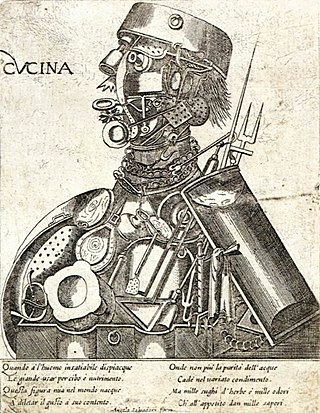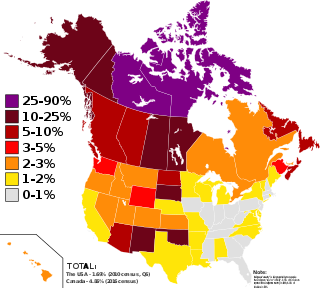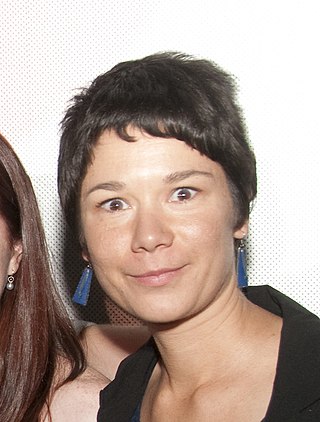Related Research Articles

Cyberspace is an interconnected digital environment. It is a type of virtual world popularized with the rise of the Internet. The term entered popular culture from science fiction and the arts but is now used by technology strategists, security professionals, governments, military and industry leaders and entrepreneurs to describe the domain of the global technology environment, commonly defined as standing for the global network of interdependent information technology infrastructures, telecommunications networks and computer processing systems. Others consider cyberspace to be just a notional environment in which communication over computer networks occurs. The word became popular in the 1990s when the use of the Internet, networking, and digital communication were all growing dramatically; the term cyberspace was able to represent the many new ideas and phenomena that were emerging. As a social experience, individuals can interact, exchange ideas, share information, provide social support, conduct business, direct actions, create artistic media, play games, engage in political discussion, and so on, using this global network. Cyberspace users are sometimes referred to as cybernauts.

In Canada, Indigenous peoples comprise the First Nations, Inuit, and Métis. Although Indian is a term still commonly used in legal documents, the descriptors Indian and Eskimo have fallen into disuse in Canada, and many consider them to be pejorative. Aboriginal peoples as a collective noun is a specific term of art used in some legal documents, including the Constitution Act, 1982, though in most Indigenous circles Aboriginal has also fallen into disfavour.
Electronic civil disobedience can refer to any type of civil disobedience in which the participants use information technology to carry out their actions. Electronic civil disobedience often involves computers and the Internet and may also be known as hacktivism. The term "electronic civil disobedience" was coined in the critical writings of Critical Art Ensemble (CAE), a collective of tactical media artists and practitioners, in their seminal 1996 text, Electronic Civil Disobedience: And Other Unpopular Ideas. Electronic civil disobedience seeks to continue the practices of nonviolent-yet-disruptive protest originally pioneered by American poet Henry David Thoreau, who in 1848 published Civil Disobedience.

The Wiikwemkoong First Nation is a First Nation on Manitoulin Island in Northern Ontario. The Wiikwemkoong Unceded Territory is the First Nation reserve in the northeast of Manitoulin Island in Manitoulin District, Ontario, Canada. Wiikwemkoong is an unceded Indigenous reserve in Canada, which means that it has not "relinquished title to its land to the government by treaty or otherwise."
Online ethnography is an online research method that adapts ethnographic methods to the study of the communities and cultures created through computer-mediated social interaction. As modifications of the term ethnography, cyber-ethnography, online ethnography and virtual ethnography designate particular variations regarding the conduct of online fieldwork that adapts ethnographic methodology. There is no canonical approach to cyber-ethnography that prescribes how ethnography is adapted to the online setting. Instead individual researchers are left to specify their own adaptations. Netnography is another form of online ethnography or cyber-ethnography with more specific sets of guidelines and rules, and a common multidisciplinary base of literature and scholars. This article is not about a particular neologism, but the general application of ethnographic methods to online fieldwork as practiced by anthropologists, sociologists, and other scholars.

God's Lake Narrows is a community located in northeastern Manitoba in Canada. The community is located on the shores of Gods Lake, which is the 7th largest lake in the province. God's Lake has a maximum depth of 75 meters.
Cyberformance refers to live theatrical performances in which remote participants are enabled to work together in real time through the medium of the internet, employing technologies such as chat applications or purpose-built, multiuser, real-time collaborative software. Cyberformance is also known as online performance, networked performance, telematic performance, and digital theatre; there is as yet no consensus on which term should be preferred, but cyberformance has the advantage of compactness. For example, it is commonly employed by users of the UpStage platform to designate a special type of Performance art activity taking place in a cyber-artistic environment.
Over the course of centuries, many Indigenous Canadians have played a critical role in shaping the history of Canada. From art and music, to law and government, to sports and war; Indigenous customs and culture have had a strong influences on defining Canadian culture. The Indspire Awards are the annual awards presented by Indspire, formerly the National Aboriginal Achievement Foundation. The awards were first established in 1993 in conjunction with the United Nations declaring the 1990s "International Decade of the World's Indigenous peoples". June 21 is Canada's National Aboriginal Day, in recognition of the cultural contributions made by Canada's indigenous population. The day was first celebrated in 1996 following Governor General of Canada Roméo LeBlanc's proclamation.
The following is an alphabetical list of topics related to Indigenous peoples in Canada, comprising the First Nations, Inuit and Métis peoples.

The grunt gallery is a Canadian artist-run centre, founded in 1984 and located in Vancouver, British Columbia. They show work by both Indigenous and non-Indigenous artists.

The Halluci Nation, formerly known as A Tribe Called Red, is a Canadian electronic music group who blend instrumental hip hop, reggae, moombahton and dubstep-influenced dance music with elements of First Nations music, particularly vocal chanting and drumming. Based in Ottawa, Ontario, the group consists of Tim "2oolman" Hill, and Ehren "Bear Witness" Thomas. Former members include co-founder DJ Jon Deck and Dan "DJ Shub" General, who left the band for personal reasons in spring 2014, and was replaced by Hill. Co-founder Ian "DJ NDN" Campeau left the band for health reasons in October 2017, with the band opting to remain a duo for the time being.

Nadia Myre is a contemporary visual artist from Quebec and an Algonquin member of the Kitigan Zibi Anishinaabeg First Nation, who lives and works in Montreal. For over a decade, her multi-disciplinary practice has been inspired by participant involvement as well as recurring themes of identity, language, longing and loss. Of the artist, Canadian Art Magazine writes, "Nadia Myre’s work weaves together complex histories of Aboriginal identity, nationhood, memory and handicraft, using beadwork techniques to craft exquisite and laborious works."
Mentoring Artists for Women's Art (MAWA) is a feminist visual arts education center based in Winnipeg, Manitoba. Created in 1984, this non-profit organization encourages and supports the intellectual and creative development of women in the visual arts by providing an ongoing forum for education and critical dialogue.
Skawennati is a Mohawk multimedia artist, best known for her online works as well as Machinima that explore contemporary Indigenous cultures, and what Indigenous life might look like in futures inspired by science fiction. She served as the 2019 Indigenous Knowledge Holder at McGill University. In 2011, she was awarded an Eiteljorg Contemporary Art Fellowship which recognized her as one of "the best and most relevant native artists."

Lisa Jackson is a Canadian Screen Award and Genie Award-winning Canadian and Anishinaabe filmmaker. Her films have been broadcast on APTN and Knowledge Network, as well as CBC's ZeD, Canadian Reflections and Newsworld and have screened at festivals including HotDocs, Edinburgh International Film Festival, Melbourne, Worldwide Short Film Festival and Berlin International Film Festival.
Lawrence Paul Yuxweluptun is a Cowichan/Syilx First Nations contemporary artist from Canada. His paintings employ elements of Northwest Coast formline design and Surrealism to explore issues as environmentalism, land ownership, and Canada's treatment of First Nations peoples.
God's Lake Narrows is an interactive visual essay, written and directed by Kevin Lee Burton, co-created with Alicia Smith, sound design by Christine Fellows, and photography by Manitoba-based Anishinabe artist Scott Benesiinaabandan. The visual essay is hosted online by the National Film Board of Canada and was funded in partnership with imagineNATIVE Digital Media Partnership.
Indigenous Futurism is a movement consisting of art, literature, comics, games, and other forms of media which express Indigenous perspectives of the future, past, and present in the context of science fiction and related sub-genres. Such perspectives may reflect Indigenous ways of knowing, traditional stories, historical or contemporary politics, and cultural realities.
Joseph Tekaroniake Lazare is a Mohawk director, producer, writer and actor. He is a member of the Wolf Clan.
Âhasiw Maskêgon-Iskwêw (1958–2006) was a Cree and French Métis theorist, curator and artist. Maskêgon-Iskwêw was a significant figure in the field of contemporary Indigenous arts, and a formative proponent of digital media within Indigenous communities. In their 2015 book dedication to him, Steven Loft and Kerry Swanson describe Maskêgon-Iskwêw as "one of the foremost thinkers and practitioners of Aboriginal new media art."
References
- 1 2 Gaertner, David (2016-04-15). "Indigenous in Cyberspace: CyberPowWow, God's Lake Narrows, and the Contours of Online Indigenous Territory". American Indian Culture and Research Journal. 39 (4): 55–78. doi:10.17953/aicrj.39.4.gaertner.
- 1 2 Fragnito, Skawennati Tricia. "Aboriginal Territories in Cyberspace".
{{cite journal}}: Cite journal requires|journal=(help) - ↑ "Gallery: CyberPowWow2". CyberPowWow. Retrieved 23 August 2017.